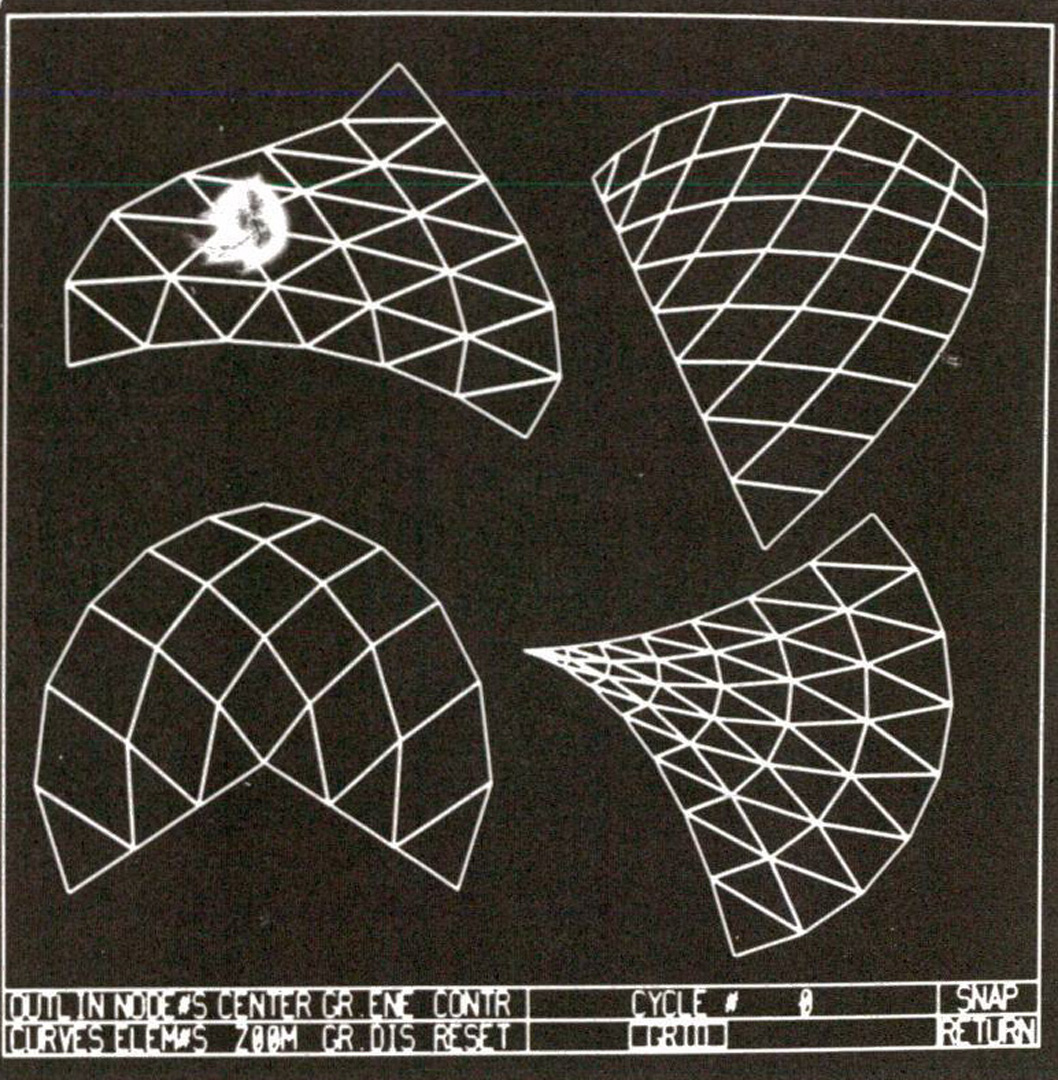“A generalized graphic preprocessor for two-dimensional finite element analysis” by Haber, Shephard, Abel, Gallagher and Greenberg
Conference:
Type(s):
Title:
- A generalized graphic preprocessor for two-dimensional finite element analysis
Presenter(s)/Author(s):
Abstract:
Input preprocessors have come to be recognized as important components of modern finite element programs. A method is described which utilizes interactive computer graphics digitizing techniques to create a powerful input preprocessor for finite element analysis. A limited number of general mesh generators based on linear blending functions permit the program to handle virturally all two-dimensional topologies. The processes of geometric input and specification of problem-specific “attributes” have been kept separate so that the mesh generation routines may be used with a variety of analysis programs. Graphical editors have been implemented to specify attributes for structural mechanics problems. Although this type of graphical preprocessor shows considerable promise for applications in three dimensions, there are still unresolved problems in the areas of geometrical description, perception, and interactive hardware.
References:
1. Singh, S., “A Computer-Aided Finite Element Idealization and Mesh Generation System,” 2nd Int. Conf. on Computers in Eng. and Building Design, (CAD ’76), Imperial College, London (March 1976).
2. Kamel, H.A. and McCabe, M.W., “Application of GIFTS III to Structural Engineering Problems,” Computers and Structures, Vol. 7, No. 3 (June 1977), p. 399.
3. Leick, R.D. and Potvin, A.B., “Automated Mesh Generation for Tubular Joint Stress Analysis,” Computers and Structures, Vol. 7, 1977, pp. 73-91.
4. Jones, R.E., “A Self-Organizing Mesh Generation Program,” Journal of Pressure Vessel Technology, ASME, Vol. 96, No. 3, pp. 193-199 (Aug. 1974).
5. Leverenz, R.K., et al, “Using Interactive Graphics for the Preparation and Management of Finite Element Data,” General Motors Research Publication, GMR-1486, 1974.
6. Kamel, H.A. and Shanta, P.J., “A Solid Mesh Generation and Result Display Package,” Journal of Pressure Vessel Technology, AMSE, Vol. 96, No.3 pp. 207-312 (August 1974).
7. Coons, S.A., “Surfaces for Computer-Aided Design of Space Forms,” Report MAC-TR-44, MIT, Cambridge, Mass. (1967).
8. Herrman, L.R., “Laplacian-Isoparametric Grid Generation Scheme,” J. of the Eng. Mechs., Div. ASCE, 102, pp. 749-756 (1976).
9. Zienkiewicz and Phillips, D.V., “An Automatic Mesh Generation Scheme for Plane and Curved Surfaces by Isoparametric Co-ordinates,” Int. J. Num. Meth. Engrg., 3, 519-529 (1971).
10. Gibbs, N.E., Poole, W.G. and Stockmeyer, K., “Algorithm 508: Matrix Bandwidth and Profile Reduction,” ACM Trans. on Mathematical Software, No. 4 (Dec. 1976), pp. 375-377.
11. Wu, S.C., Abel, J.F., and Greenberg, D.P., “An Interactive Computer Graphics Approach to Surface Representation,” Communications of the ACM, Vol. 20, No. 10 (Oct. 1977), pp. 703-712.




